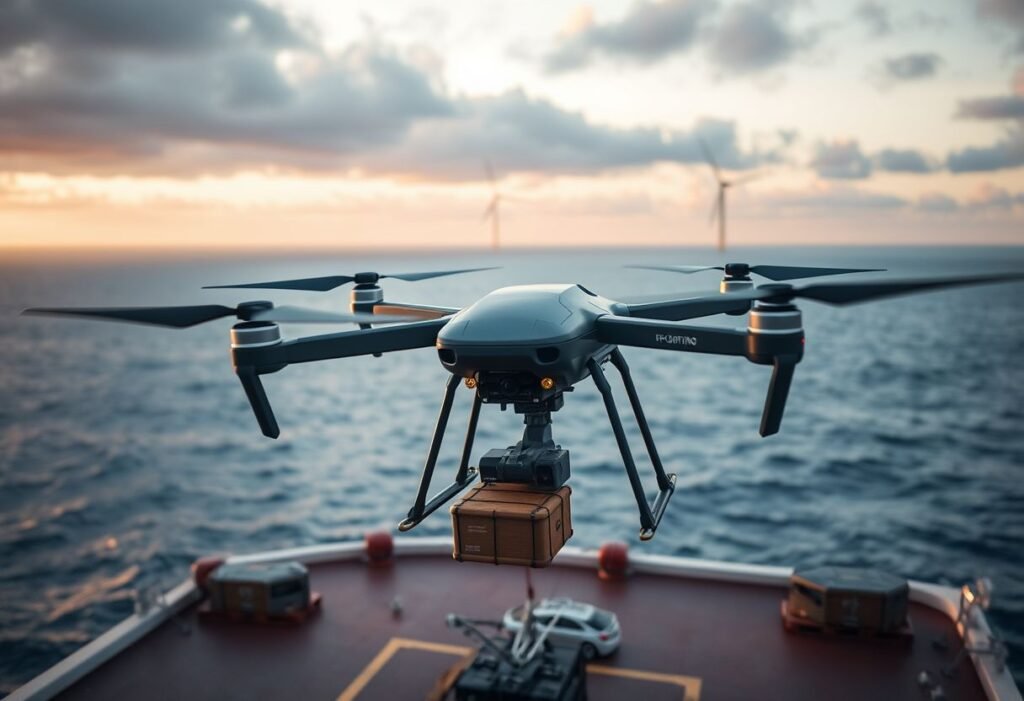Heavy lift drones are transforming the logistics of offshore wind farms, significantly enhancing efficiency and cutting down costs in critical cargo delivery.
Innovative Solutions for Offshore Logistics
In recent years, the maritime energy sector has faced challenges related to the transportation of essential supplies to offshore wind sites. The introduction of heavy lift drones marks a revolutionary approach to these logistical hurdles, enabling faster and more efficient delivery of components to turbines located far from shore. By utilizing advanced drone technology, companies like Ørsted are optimizing the supply chain, ensuring critical parts can reach their destination in a fraction of the time compared to traditional methods.
Impact on Supply Chain Efficiency
The efficiency of the supply chain has a direct correlation to the operational success of offshore wind farms. Through heavy lift drones, Ørsted has demonstrated that resupply missions can be completed up to 15 times faster than conventional transportation methods. This enhancement not only accelerates maintenance schedules but also minimizes downtime, which is crucial for maximizing energy production from wind resources. The ability to transport heavy equipment swiftly paves the way for improved operational uptime and reliability.
Cost-Effectiveness of Drone Operations
One of the most appealing aspects of integrating drones into offshore logistics is the cost savings associated with their use. Traditional resupply methods often involve expensive vessels and labor-intensive operations. By contrast, heavy lift drones drastically reduce the need for such extensive resource allocation. Ørsted’s deployment of these aerial vehicles exemplifies a strategic move towards sustainability and cost efficiency, making it easier for companies to invest in renewable energy solutions while reducing operational expenses.
Enhancing Safety in Delivery Operations
Safety is paramount in any offshore operation, particularly when transporting heavy loads to isolated environments. Heavy lift drones not only streamline logistics but also contribute to enhanced safety protocols. With fewer personnel required to manage cargo operations at sea, the risk of accidents diminishes significantly. Drones can navigate hazardous conditions that may pose threats to human workers, thereby enhancing overall safety for logistics teams working on offshore wind farms.
Future Developments in Drone Technology
The future of heavy lift drones looks promising, with ongoing advancements in technology that could further improve their utility in offshore wind operations. Innovations in battery life, weight capacity, and navigation systems are likely to enhance the functionality of these drones. As the demand for renewable energy solutions continues to rise, the role of drones in enhancing operational efficiency and sustainability will undoubtedly expand, making them an integral part of the renewable energy landscape.
Global Perspective on Renewable Energy Integration
Globally, the shift towards renewable energy is gaining momentum, and the adoption of heavy lift drones within this sector embodies significant progress. Countries investing in offshore wind energy can benefit greatly from the logistical advantages offered by these technologies. The integration of drones not only supports local economies by creating jobs in tech and renewable sectors but also aligns with global efforts to reduce carbon footprints and embrace greener energy sources.
Disclaimer: The information presented in this article serves for educational purposes only and should not be construed as financial or environmental advice.





















